Designers against the laws. Self-loading pistol Olympic Arms OA-96
Recall that the first model of the family, called OA-93, was a shortened and substantially rebuilt AR-15 rifle. The company "Olympic Arms" produced the latest serially and therefore easily coped with the alteration of the original design. First of all, the barrel was shortened, and a different return spring appeared in the automatics, which made it possible to remove the butt and the tubular casing under it. As a result, the dimensions of the product were reduced, and it could be called a gun.
Self-loading pistol OA-96. External differences from the previous OA-93 are minimal. Photo Forgottenweapons.com[/ Center]
In the fall of 1994, the United States Congress passed the Public Safety and Fire Protection Law Use Protection Act - a law that introduced new categories of small arms and established a turn in the civilian market. In accordance with the terms of the new law, the product Olympic Arms OA-93 fell into the category of "assault pistols", and therefore was forbidden to civilian traffic. However, the developers of these weapons took action and in a few years put in a series an improved version of the gun that meets the requirements.
The 1994 Act of the Year introduced five new signs for pistols with a detachable magazine: with at least two of them, the product went into the assault category and was forbidden for civilians. OA-93 managed to combine the four signs and nearly got the fifth one. Naturally, this blocked his way to the shops. However, the authors of the project have found a way to get rid of unnecessary design features and re-start sales.
The OA-93 self-loading pistol did not comply with the requirements of the law due to too much weight, the presence of a thread on the barrel to install various equipment, due to the presence of the foregrip / barrel cover, as well as due to the installation of the magazine in the shaft outside the pistol grip. Some of these features of the design could not be removed without a radical processing of weapons.
A new version of the weapon was launched on the market in 1996, which determined its name. The second pistol of the family is known as the OA-96. As before, the name showed the developer organization, and also marked the year of creation. Subsequently, according to this scheme, the third product of the family was designated.
The designers of Olympic Arms have found a rather simple loophole in the laws. The five signs of an “assault pistol” related only to weapons with a detachable magazine and did not affect the system with an integrated ammunition system. The main task of the new project was the recycling of weapons using a non-removable store. Other signs of "assault" weapons could be left not to touch.
One of the main goals of the OA-96 project was to maintain the highest possible unification with the OA-93 and the basic AR-15 rifle. This task was successfully solved from an engineering point of view. At the same time, the result was not the most interesting and successful, which predetermined his fate in the market.
In the new project, the main elements of the pistol remained two parts of a collapsible receiver, which were slightly modified receivers of the base AR-15. The top receiver had a tubular shape, but on top of it was placed a rectangular casing that contained new bolt group details. Otherwise, he retained his original design, created more for the rifle. The lower receiver, in general, remained the same, but has undergone some changes. The casing of the firing mechanism and pistol grip remained the same, while the mine shop was modified.
In all previous projects, the two receivers were connected to each other using a pair of removable pins. The rear was proposed to be removed during maintenance and other procedures. The front one served as an axle, with the help of which the pistol “broke” in half. The OA-96 pistol lost its rear pin, instead of which they installed a system with a button that simplified the “opening” of the weapon.
A rifled barrel of an entire length of 6,5 inches (165 mm) was retained. It was fixed in the top element of the receiver. Above it was placed a gas pipe that reached the box and transferred the pressure of the gases directly to the corresponding part of the barrier frame. The barrel still had threads on the muzzle, with which it was installed flame arrester. Interestingly, the processing of the design allowed the pistol to be removed from the legislative prohibition, retaining the choke.
Some gas engine automation parts for the OA-96 were borrowed directly from the AR-15 without significant changes. Remained the same layout. At the same time, the bolt carrier, modeled on the previous pistol, had a developed upper block with a vertically located rod. The latter went up and through the longitudinal groove in the tubular receiver fell inside the additional casing.
In a special tubular casing installed over the barrel and forearm, there was a return spring that was put on the longitudinal guide rod. The rear end of the spring rested against the wall of the casing, and the front one interacted with the washer on the guide rod. When the slide group rolled back, the spring worked in compression. Cocking handle associated with the main parts of automation, located under the carrying handle.
With the exception of the modified frame, the design of the entire bolt group has not changed. As on the base rifle and on the previous pistol, a bolt with locking rotation was used. Inside the gate there was a moving drummer and an extractor. The top receiver retained the side cover for the shutter rammer, but it was not used and closed with a plug. In some cases, a screw stopper with a swivel for a belt was placed at this place.
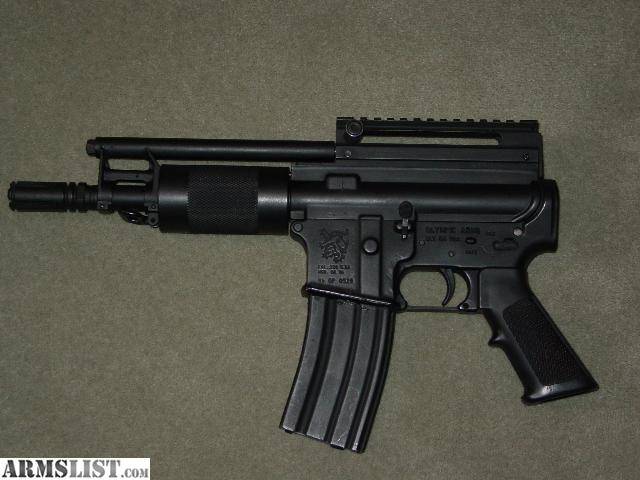
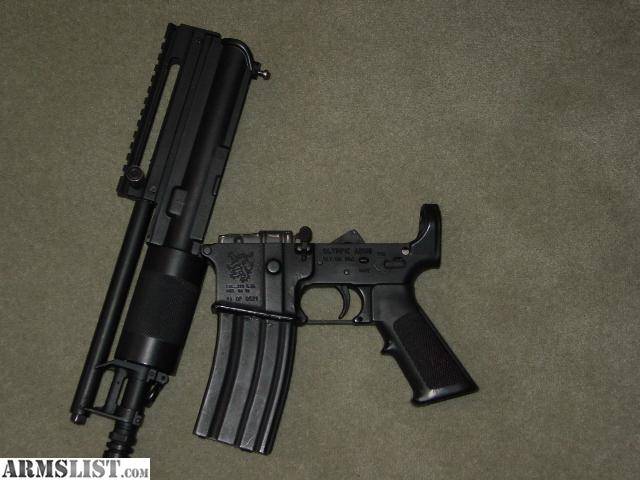
Pistol in the combat position and configuration for reloading. Photo Armslist.com
The trigger mechanism for OA-96 was borrowed unchanged from the previous OA-93. The hammer-type mechanism provided for firing single guns without the possibility of automatic fire. The standard fuse borrowed from the AR-15 remained. On the left above the pistol grip there was a two-position safety flag.
The new law on weapons, among other things, prohibited pistols with a detachable magazine from having a receiver outside the grip. The company Olympic Arms took this into account and found an interesting way out. For the OA-96 pistol ammunition, an integrated box magazine was to be used, based on the design of the standard AR-15 rifle device. As before, it was proposed to use the NATO 5,56x45 mm cartridges.
Inside the standard magazine case, limiters appeared, as a result of which its capacity was reduced to 10 cartridges. The store itself should be installed in the mine and secure there without the possibility of a reset. Thus, the gun received a non-removable magazine, and therefore did not fall under the terms of the Public Safety and Firewalls Use Protection Act. However, such a ruse worsened the usability of the weapon. To recharge, you had to press a button on the back pin and turn the upper receiver forward, after which the magazine could be equipped with a clip.
Such a revision brought the gun out of the limitations of the law. This, among other things, made it possible to preserve the staff plastic foregrip completely surrounding the barrel. Pistol grip also has not changed significantly. In this case, the ergonomics of the weapon has been improved due to the possibility of installing a belt. The front swivel for him was under the gas block, the rear one was in place of the paddle rammer.
Like its predecessor, the OA-96 had no standard aiming devices. Instead, they placed a Picatinny rail on the top receiver for mounting any compatible devices. In the opening under the bar was cocking the handle.
The 1996 pistol of the year could be equipped with a removable folding butt. For this, the back cover-stopper of the lower receiver was replaced with a similar part with screw holes. It was proposed to fix the base of the butt on it. The butt itself had a tubular structure and had to fold to the right. Installing the butt turned the gun into a full carbine.
Despite some design changes, the new Olympic Arms OA-96 pistol was most similar to the OA-93, and also had similar dimensions. The standard length of the product was 17 inches (432 mm), other dimensions corresponded to AR-15 family rifles. Mass - about 5 pounds (less than 2,5 kg). Automation provided the technical rate of fire at dozens of shots per minute, and a short barrel allowed effective fire at ranges of no more than 150-200 m.
With all the similarities with the previous gun, the new OA-96 had important differences. Other design of the store and its other features ensure compliance with current laws. As a result, unlike the OA-93, these weapons could be used by civilians. The company-developer received the necessary permissions and brought its new development to the market. She was supposed to occupy the same niche as the previous sample, which had been taken out of production two years earlier.
There is every reason to believe that a certain part of the civilian arms community was waiting for a novelty from Olympic Arms. Her first pistol based on a rifle, despite its strange appearance, enjoyed a certain popularity, and its modified version could count on success. However, this did not happen. The design features that provided entry into the market ruined the gun commercially.
To meet the requirements of the gun equipped with an integrated store reduced capacity. Moreover, the store was supposed to be equipped with a clip, after having “broken” the weapon. The ergonomics of such a decision, to put it mildly, left much to be desired. In addition to the general inconvenience, there was a risk: the shooter could touch the heated parts of the automatics during reloading and get burned. Thus, the gun turned out to be trivially inconvenient to handle, and the complexity of reloading put an end to all its advantages.
As a result, the new pistol was not particularly popular among buyers. Substantial quantities of serial OA-96 were shipped to wholesalers and then dispersed through gun shops, but soon orders for new lots ceased. Power structures that had previously shown interest in OA-93 did not want to buy a new modification of the gun. The reasons for this are obvious and directly related to the limited characteristics. In such circumstances, the company Olympic Arms was forced to curtail the production of original weapons.
According to various sources, in a matter of months of mass production, no more than a few hundred OA-96 series pistols were produced. They found their owners, but a significant part of such weapons soon appeared in the secondary market. Apparently, a certain number of original pistols still remain in the arsenals of amateur shooters, but they cannot be called common or popular civilian weapons.
The OA-96 project was based on the design of the OA-93 pistol, as well as interesting solutions related to circumventing legal restrictions. The real prospects of the OA-96 product clearly showed that the idea of installing a non-removable store - although it allows obtaining permission to sell - does not meet the requirements of ergonomics and safety. Thus, in order to remain in a promising market niche, the developer had to create a new model of weapons based on existing ones.
Already in 1998, Olympic Arms launched the third AR-15 self-loading pistol - OA-98. This time they decided to take into account the requirements of the law, and the question of the masses was put at the center. The goal of the project was to reduce the weight to 50 ounces required by law. This task was successfully solved, and a new curious sample of small arms entered the stores. It did not contradict the laws, and besides, it was as close as possible to the original OA-93, which at one time interested buyers.
There is reason to believe that in the absence of Public Safety and Recreational Firearms Use Protection Act 1994, the Olympic Arms could have produced an OA-93 pistol in the required quantities, shipped it to customers and earn well-deserved profits. However, the appearance of a restrictive law forced her to develop new versions of her weapon. And not all variants of its development were successful. As it turned out after the start of sales, a curious solution from the design point of view with an integrated store, used in the OA-96 project, only alienated buyers. However, the company soon proposed a new version of the final design.
On the materials of the sites:
http://olyarms.com/
http://guns.com/
http://forgottenweapons.com/
http://imfdb.org/
http://modernfirearms.net
http://quarterbore.com/
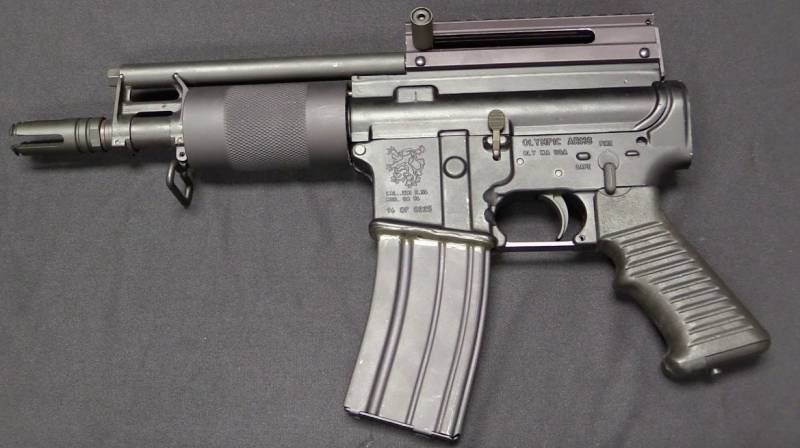
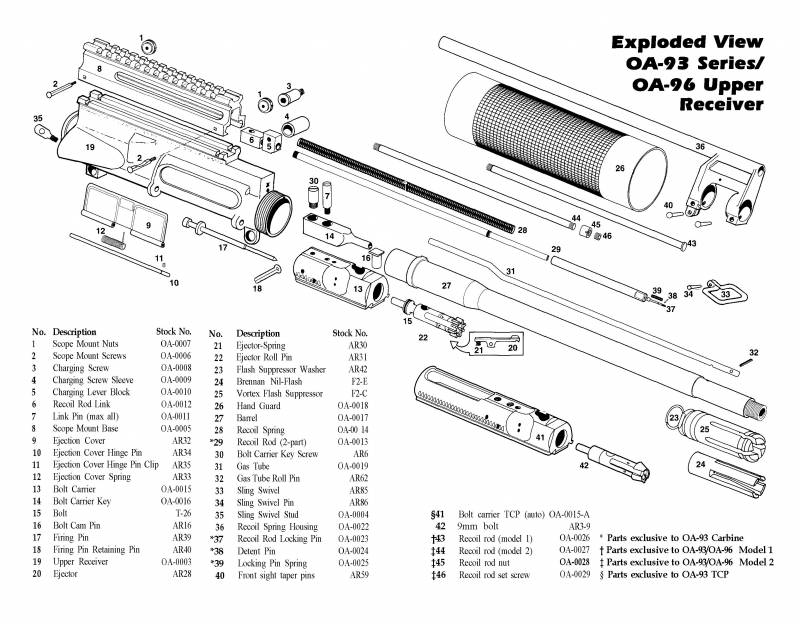
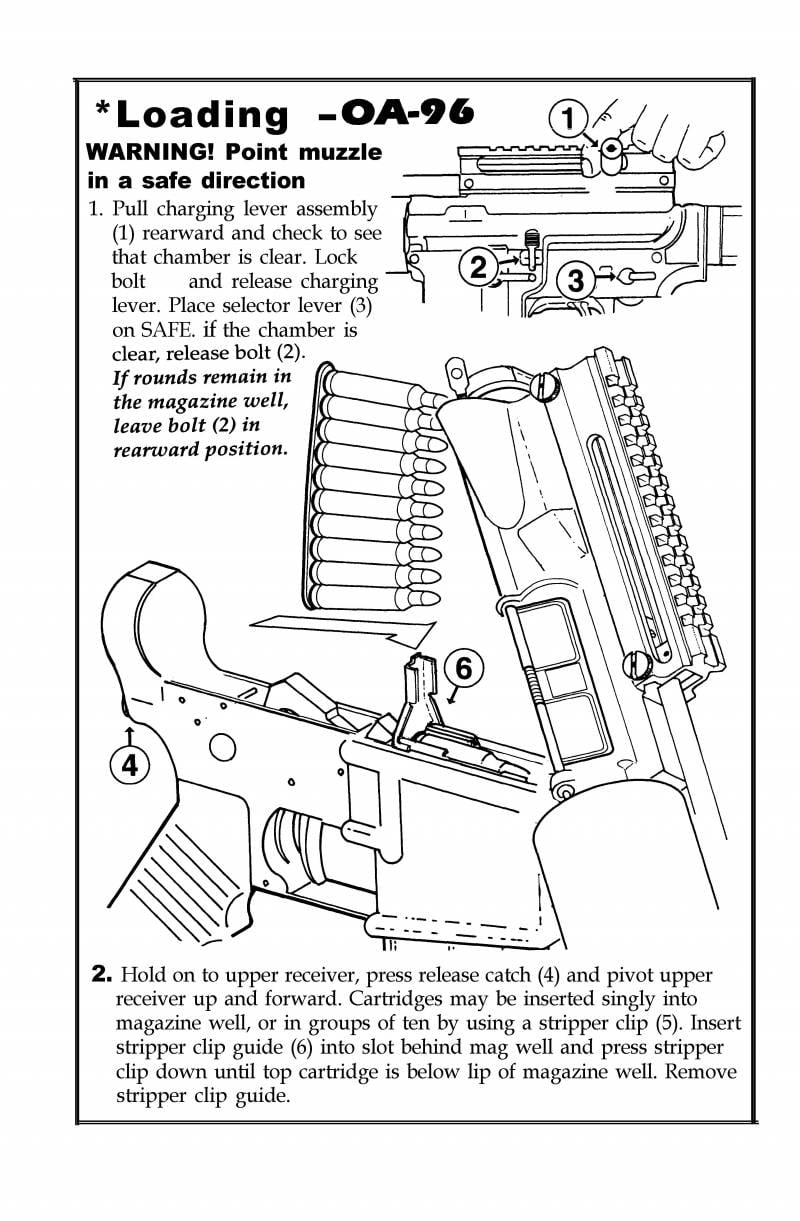
Information